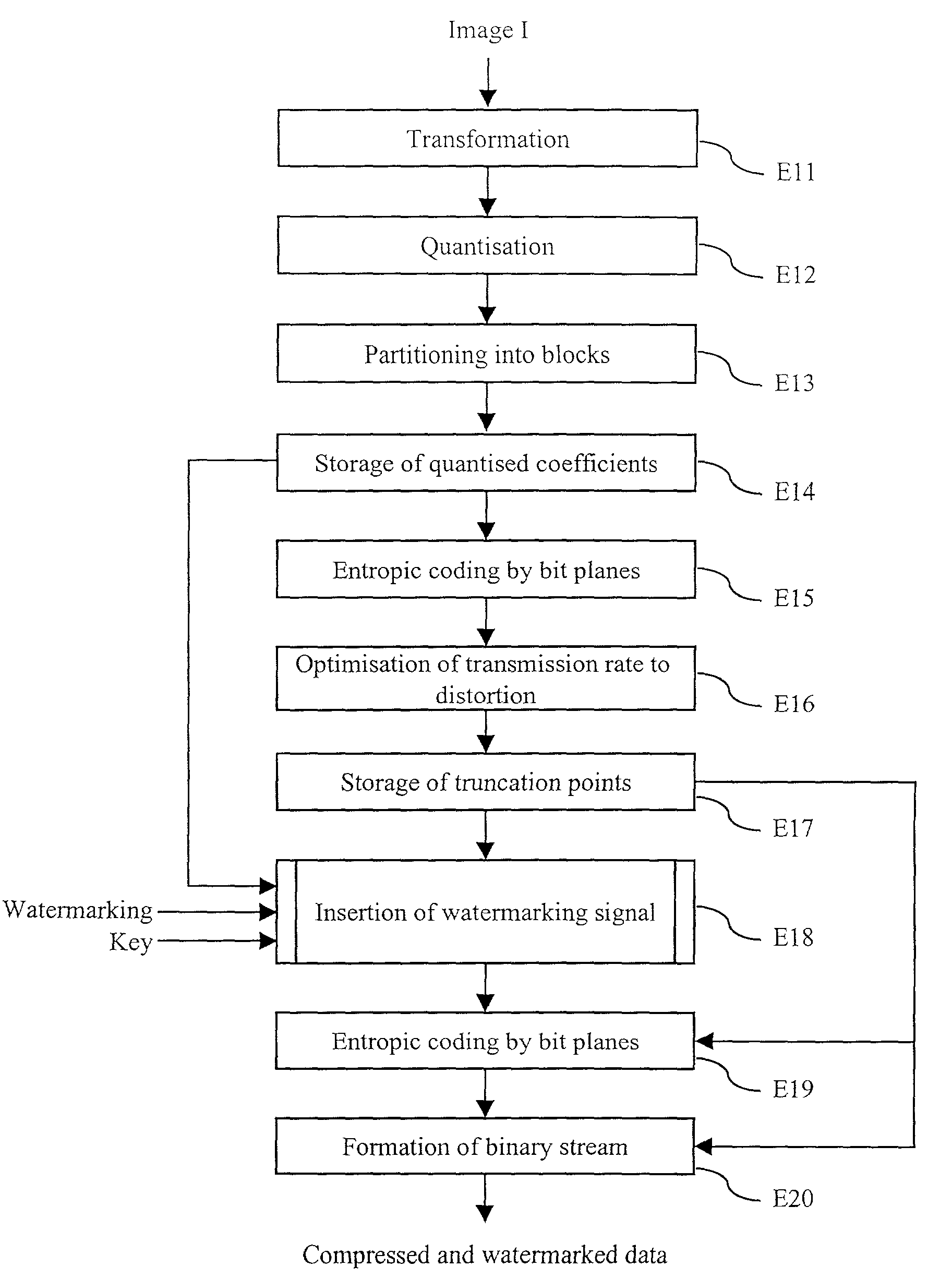Method for the prior monitoring of the detectability of a watermarking signal
a detection capability and watermarking technology, applied in the field of prior monitoring of the detectability of watermarking signals, can solve the problems of additive noise not being actually applied, theoretic distortion is adapted neither to the image being processed nor to the compression technique used, and the detection accuracy is not high, so as to ensure the robustness of the watermarking signal
- Summary
- Abstract
- Description
- Claims
- Application Information
AI Technical Summary
Benefits of technology
Problems solved by technology
Method used
Image
Examples
Embodiment Construction
[0091]A description will be given below of a preferred embodiment of the invention in which an adaptive watermarking method is implemented at the same time as the compression of a digital image.
[0092]Although in the remainder of the description a global digital image I is considered, all the methods detailed below can be applied to sub-parts of a digital image.
[0093]Likewise, these methods could be applied to digital data representing an audio signal.
[0094]The compression method envisaged above, which will be described more particularly with reference to FIGS. 2 and 3, is based on an optimisation of the ratio of transmission rate to distortion.
[0095]The compression algorithm has the feature of scalability for transmission rate and distortion.
[0096]As used herein the term “scalability” means that the binary stream consisting of the compressed data contains several subsets, each of these subsets representing an effective compression of the digital image at fixed rate.
[0097]Reference c...
PUM
 Login to View More
Login to View More Abstract
Description
Claims
Application Information
 Login to View More
Login to View More - R&D
- Intellectual Property
- Life Sciences
- Materials
- Tech Scout
- Unparalleled Data Quality
- Higher Quality Content
- 60% Fewer Hallucinations
Browse by: Latest US Patents, China's latest patents, Technical Efficacy Thesaurus, Application Domain, Technology Topic, Popular Technical Reports.
© 2025 PatSnap. All rights reserved.Legal|Privacy policy|Modern Slavery Act Transparency Statement|Sitemap|About US| Contact US: help@patsnap.com



